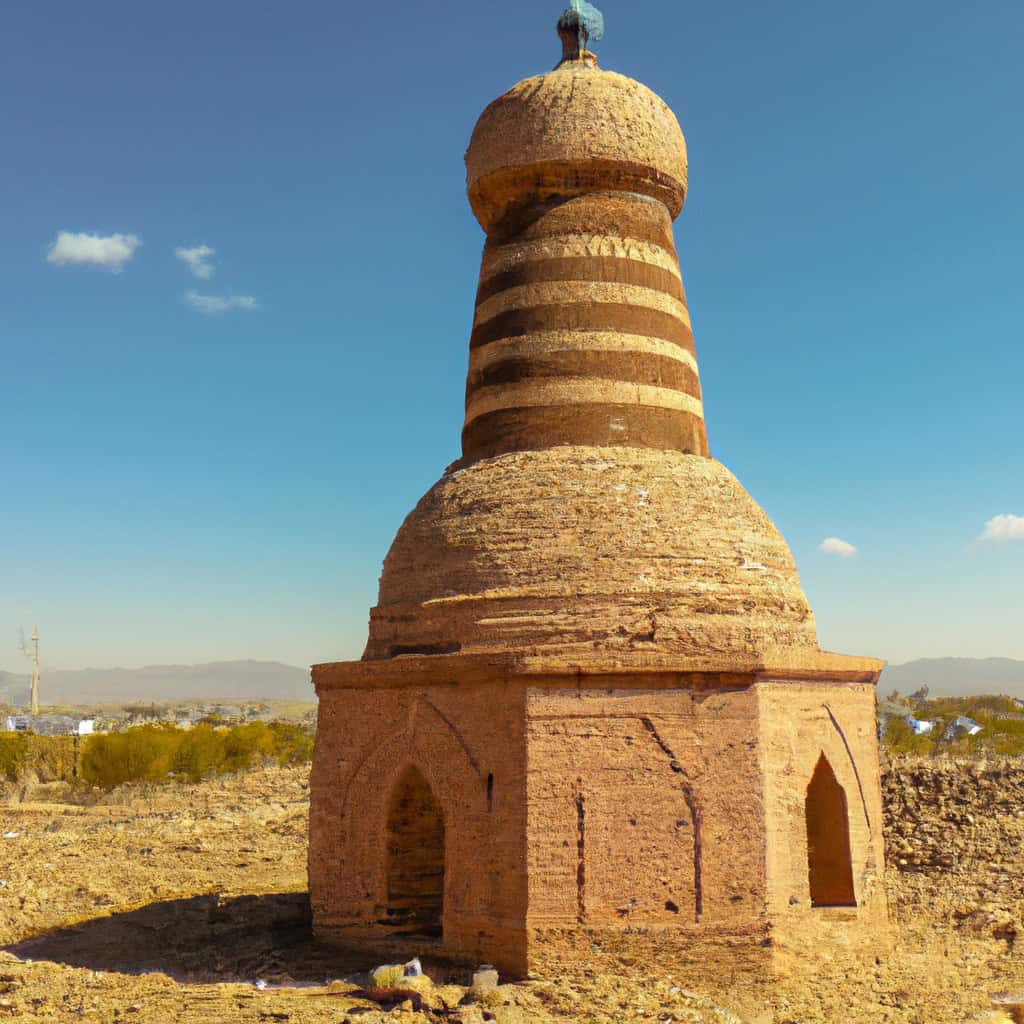Surkh Rod Stupa in Surkh Rod District, is one of many fascinating sites that both foreign visitors and local tourists can explore while they visit Afghanistan and exploring Nangarhar Province. This marvelous piece of history rests within the beautiful landscapes of Afghanistan, serving as a living testament to the region’s rich and prosperous past. An architectural marvel in its own right, the Surkh Rod Stupa stands tall and proud, exuding a profound sense of peace and serenity that echoes through the ages. Its historical and cultural significance attracts historians, archaeologists, and inquisitive travellers from around the globe, eager to unravel the captivating stories hidden within its weathered stones.
Surkh Rod Stupa Most Important Events
- Discovery and Excavation: When the Surkh Rod Stupa was first discovered in the early 20th century, it caused quite a stir in the historical and archaeological community. The early excavations unearthed artefacts and structural patterns that provided profound insight into Afghanistan’s Buddhist history.
- Recognition as a UNESCO heritage site: Surkh Rod Stupa’s significance was further cemented in the historical narrative when it was recognized as a UNESCO heritage site in the mid-20th century. This recognition sparked renewed interest in the site, increasing its visibility on the global stage.
- Preservation Efforts: The successful preservation efforts carried out in the late 20th and early 21st centuries deserve mention. Dedicated teams of historians, archaeologists, and conservationists came together to ensure that Surkh Rod Stupa’s heritage would be protected for generations to come.
History of Surkh Rod Stupa in Surkh Rod District
The Surkh Rod Stupa was constructed during the 2nd and 3rd centuries AD, a period when Buddhism was spreading rapidly throughout Afghanistan. Constructed as part of a monastery complex, the stupa served to remind practitioners of the aspects of Buddhist teaching, including the impermanence of life.
Over the centuries, the stupa faced various invasions, natural calamities, and the rise and fall of numerous empires. Each phase of its history is intricately etched on its architecture, bearing witness to a time that shaped the religious and cultural landscape of the region.
In the modern era, the Surkh Rod Stupa stands as an iconic remnant of Afghanistan’s Buddhist era. Recent archaeological efforts have led to the discovery of several artifacts and relics, leading to a renewed interest in the monument.
Why It’s Important to Afghan History
The Surkh Rod Stupa is significant to Afghan history as it represents the Buddhist era of the country. The presence of the stupa shows that Afghanistan once had a flourishing Buddhist culture. Its survival through various eras serves as a testament to the resilience of the Afghan people and their rich cultural tapestry.
The site also provides insights into the architectural advances of the time, with the stupa’s distinct construction giving researchers a glimpse into the religious practices and rituals that took place. This has contributed significantly to our understanding of Afghanistan’s historical and cultural evolution.
Why to Visit Surkh Rod Stupa
Visiting the Surkh Rod Stupa is like taking a step back in time. The architectural beauty of the stupa shines through its detailed carvings and ornate design. Surrounded by the scenic beauty of the Afghan landscape, the site lends itself to unforgettable moments of reflection and tranquility.
Beyond its picturesque nature, the site is also a place of learning, where one can delve into the history of Afghanistan, its early Buddhist culture, and the technological advancements of the period. It is an ideal destination for history enthusiasts and curious travelers alike.
The top five highlights to look out for are:
- The intricate carvings that adorn the stupa
- The beautiful surrounding landscape
- The archaeological finds on display
- The charming local culture and hospitality
- The overall serene and reflective atmosphere of the place
The best time to visit is during the cooler months, from October to April. The stupa is located near the town of Jalalabad, and various modes of transport are available.
Cultural & Tourist Significance
For the local population, the Surkh Rod Stupa holds a special place as it connects them to their historical roots. Its preservation is seen as part of the larger effort to maintain and showcase Afghanistan’s diverse cultural legacy.
To tourists, the stupa offers a unique opportunity to learn about a side of Afghanistan that is often overshadowed by recent events. It offers a chance to understand the region beyond the conflict and to enjoy its rich heritage and breathtaking landscapes.
The stupa also plays a vital role in promoting Afghanistan as a tourism destination. It exemplifies its potential as a hub for cultural and historical tourism, attracting visitors from all over the world.
Interesting Facts
The Surkh Rod Stupa holds many stories in its stone. Legends say that each brick used to construct the stupa was laid with a prayer, imbuing the monument with a profound spiritual energy that visitors claim to feel even today.
Despite its grandeur, the stupa remained undiscovered for many centuries, hidden away amidst the rugged terrain of Nangarhar Province. Its discovery henceforth revealed an astonishingly well-preserved segment of Afghanistan’s historical narrative.
Interestingly, the Surkh Rod Stupa is not just a Buddhist monument. The site was also used by later Islamic communities, portraying a unique synthesis of religious histories and making it a symbol of shared cultural heritage.


